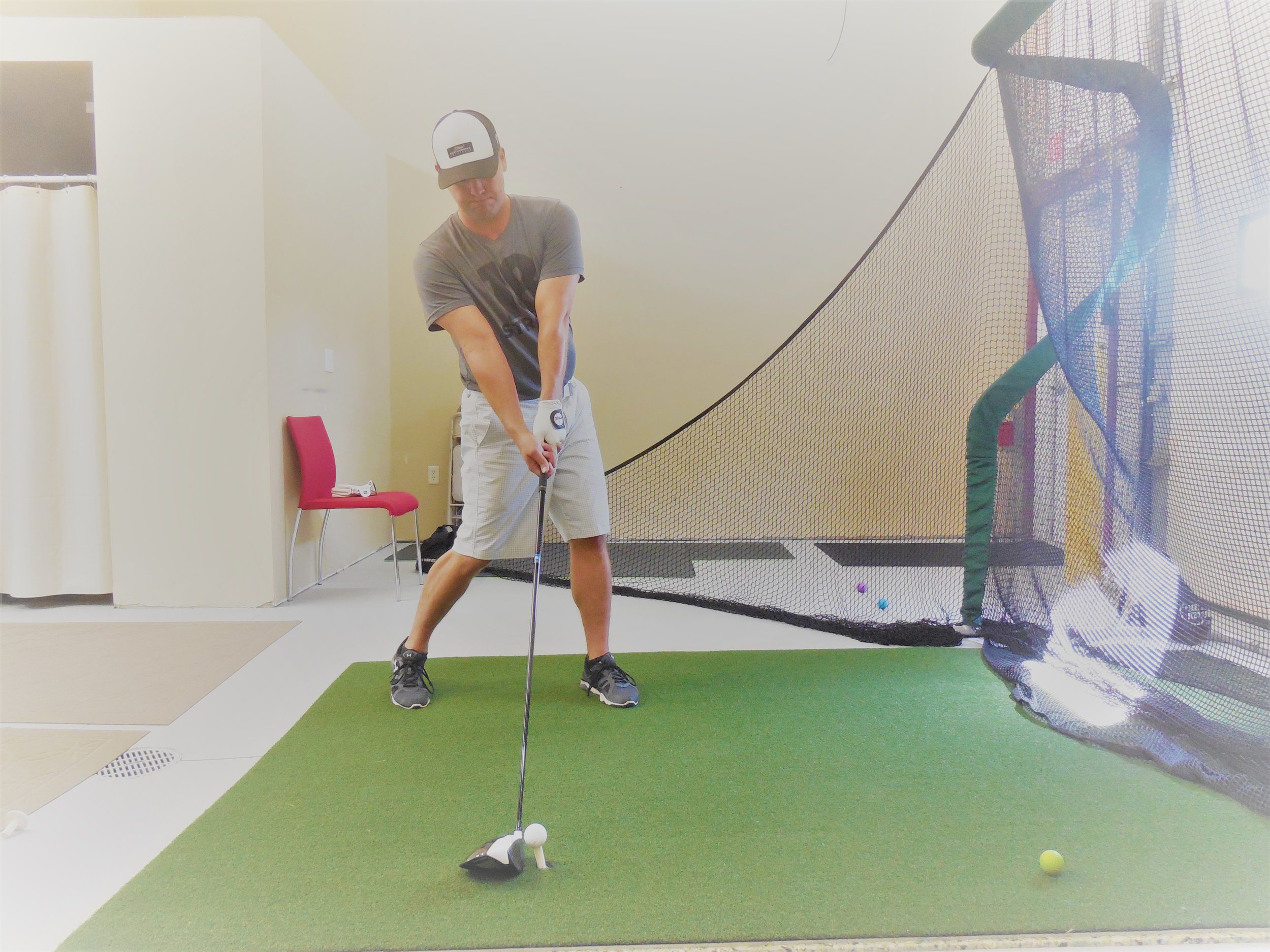Hint: It’s likely not because of your elbow that your elbow is hurting…
No, this is isn’t some hokey quick fix magic trick post.  When it comes to the body and golf, I’m not sure there is such a true thing as a “quick fix.†Â
However, this is meant to inform you that if you’ve been having elbow (or shoulder, or wrist, or back for that matter) issues with golf or you’re not happy with your distance…there is something you may be missing. Â
It has become increasingly obvious the more I’ve worked with golfers (and analyzed myself at times) that what we do with our arms and hands sometimes has little to do with our arms and hands.  It has way more to do with what is happening at the lower body and more specifically the pelvis. Â
If you’ve been having bad tennis or golfer’s elbow or shoulder pain, then there’s a chance that looking at what your lower half and pelvis are doing could be hugely beneficial.  Specifically are they sequencing properly and/or sequencing at all?!
Using the ground, initiating the sequence with your legs and pelvis and having the pelvis rotate will inevitably reduce  the “active demand†of your elbows and wrists.  Because if you’re trying to generate acceleration of your hands and club but the sequence does not initiate with the legs and pelvis, odds are you’re getting what I like to call “armsy.â€
Think of it like this…stand up straight and then try to swing a club from that upright position.  Likely it feels awkward, weak, and very arm dominant.  Because you really can’t use your legs or sequence the pelvis at all from that upright position. Â
It really isn’t that different for people if they’re taking a golf posture but neglecting to have the lower half and pelvis participate in the sequence of the swing.  They’re getting arm dominant again.  In context of the golf swing (which this is the most I’ll address about swing mechanics…pros and swing coaches would far better serve you addressing that aspect), this can lead to casting, scooping, early release, and chicken winging.  All of which can lead to excess stress on the elbows and wrists, especially done repeatedly. Â
Some pictures may help display what we’re talking about here…
At impact, ideally we’d see anywhere between 30 and 50 degrees of pelvic rotation towards the target line (indicating the pelvis was sequenced and is generating transfer of force through the body).  See below…
With good pelvic sequencing and rotation, there is a good chance we can delay release of the club and hands until the last moment necessary because we’ve initiated our power move.  See below…Â
If the lower half and the pelvis do not seem like they’re joining the party, then usually your position at impact can look similar to the position at address (which means the pelvis may be more quiet than ideal).  See below how the pelvis is “under-rotated” at impact…
Notice how the belt buckle is not necessarily rotated toward the target and the hips are square at impact….
With limited pelvic activity and sequencing, the club will often times need to release early in some fashion to get back to the ball and “feel power.† See below…
Casting and scooping are many times the result of an inactive lower half and pelvis…
Now the good news is that if you’re 25 or 70, this can be addressed.  Many people are not using their lower half and pelvis because of the following reasons (not all inclusive)…
-Past injury causing unknown inhibition in certain body regions
-Poor hip mobility
-Poor glute/hip rotator strength
-Poor motor control or coordination of movement sequence
-Pain
-Lack of awareness or body control
Essentially all of these can be modified, reduced, or eliminated to improve your armsy swing, your elbow pain, and potentially adding significant distance.  And who doesn’t want more distance?
Future posts will address the above issues as they can wreak havoc on so many other aspects of the swing. Â
Until then if you want more info on how to address some of these issues and add distance to your game then you can click here to receive our Free E-Book on the simple way to add 15 yards of distance. Â
Stay golfing my friends,
Eric





